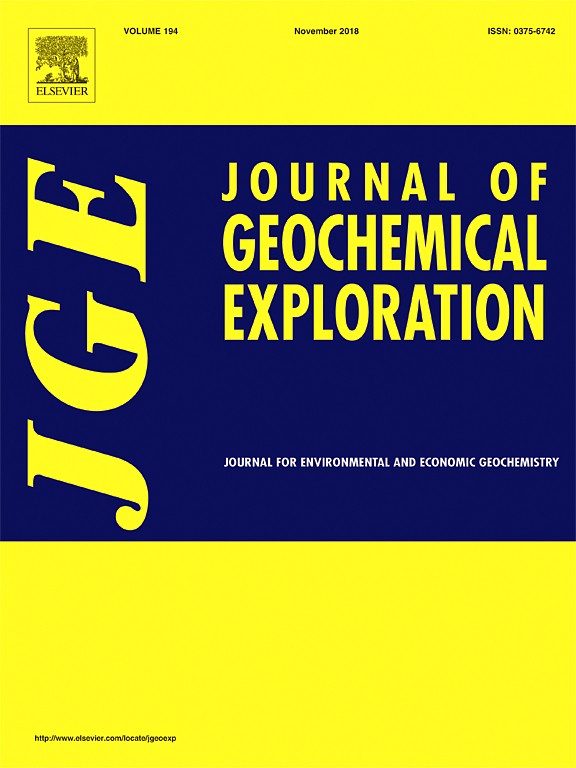
The tetrad-effect in rare earth elements distribution patterns of titanium-rich bauxites
The titanium-rich bauxite horizon of the Kanigorgeh bauxite (northeast of Bukan, NW Iran) is a part of the globally significant known Irano-Himalaya karst bauxite belt. This bauxite horizon was developed as discontinuous stratified layers and/or lenses within carbonate rocks of the Ruteh Formation of Upper Permian age. Studies of whole rock geochemistry along a selected profile across the horizon revealed that Ce anomaly values of the bauxite ore samples vary from 0.22 (negative) to 7.34 (strongly positive). The remarkable variations in ratios of some isovalent elements such as Y/Ho, Nb/Ta, and Zr/Hf along the profile illustrate non-CHARAC behavior which can be attributed to so-called tetrad-effect phenomenon in this residual horizon. The chondritenormalizedREEdistributionpatternsrepresenttheirregularshapesknownasM-andW-shapetetrad-effects.The illustration of diagrams of fourth tetrad-effects versus Ce anomaly values and ratios of Y/Ho, Nb/Ta, and Zr/Hf indicated that the studied residual horizon comprises two distinct zones with different geochemical behaviors. The upper zone, from top surface down to ~7.3 m, was deposited under oxidizing conditions represented by the bauxitic composition.Thelowerzone,startingfrom~7.3 mdownto thebottomofthehorizon, wasprecipitated under reducing conditions manifested by the kaolinitic composition. The obtained results led us to deduce that the tetrad-effects can be used as a geochemical indicator to evaluate the depositional conditions of bauxite deposits. It has been further concluded that certain mechanisms such as mineral crystallization, REE-complexation, penetration of meteoric acidic surface waters, and lateritization intensity had striking influence upon occurrence of the tetrad-effects in the studied titanium-rich bauxite ores in the Kanigorgeh district.